Only wicker and/or leather toe straps were used on the oldest skis. It is also known that the Sami and the military have used leather straps around the heel for centuries. Telemarkers used wicker around the heel in the 1860s. Bindings of rattan came around 1890. In 1894, Fritz Huitfeldt took out a patent for the bolted binding and the iron pipe binding three years later, which in 1904 was applied to Sigurd H°yer-Ellefsen strap tightener. In 1920, Marius Eriksen patented adjustable bindings, which attached to the top of the ski with screws.
At the beginning of the 20th century, the same binding was used for both ski jumping and cross-country skiing. Gradually, both skis and bindings became more specialized. Special bindings for cross-country skiing came in 1913. The Kandahar cable binding for jumping and alpine came around 1930. Pin bindings were invented in 1927 and are still used today. With the popularity of cross country skiing occuring in the 1970s, many variations of bindings were introduced. Rottefella started making their new Nordic norm bindings in the 1980s and binding evolution continued.

Wicker (Vidje) or leather toe strap dates back to prehistoric times.
They were used with boots made of animal skins with an upturned toe. Thus it was easy to kick the skis off when hunting reindeer or when working in the forest.
|
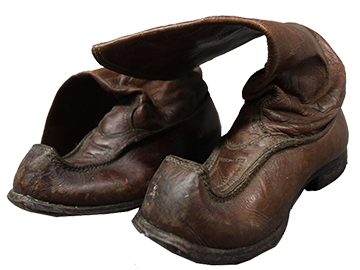
Sami boots used with Vidje bindings.
Photo by Piotr Jasienski "Szuwarek"
|
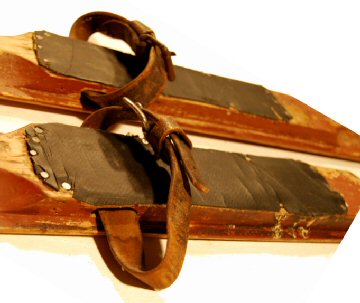
Leather strap bindings from the late 1800s
|
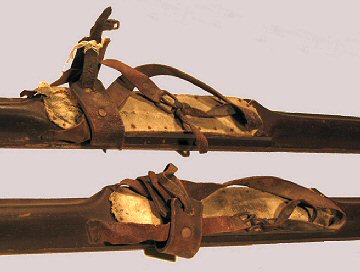
Leather harness bindings from the late 1800s, usually made by horse harness-makers.
|

Huitfeldt binding through a mortise in the ski - 1897 by Fritz Huitfeldt
|
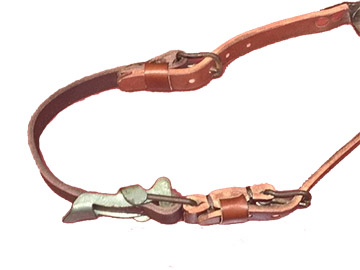
Høyer-Ellefsen buckle/clamp - 1904
|

Bergendahl binding, patented in 1913 by Olaf Selmer
|

Marius Eriksen (father of Stein Eriksen) toe iron, introduced in 1920
|
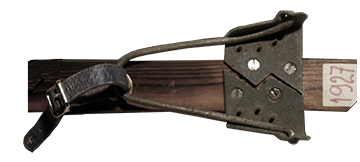
Rottefella 6-pin binding invented by Bror With in 1927.
In 1948, 4-pin bindings were introduced and 3-pin bindings were used starting in the early 1960s.
Click here for more information on Rottefella bindings.
|
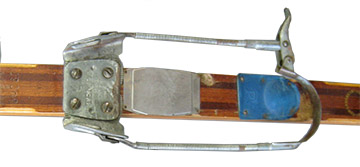
Tempo Binding - Introduced in the mid-1930s
|
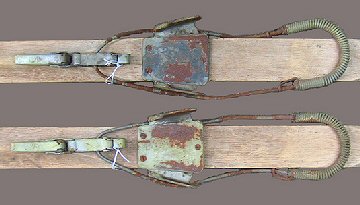
Gresvig Kandahar cable bindings - 1938
Click here for instructions on mounting cable bindings
|
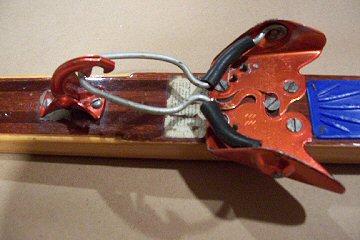
ca 1948: Rottefella 4-pin binding |
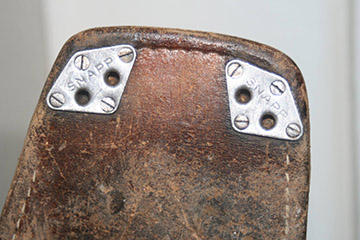
4-pin boot plates - ski boots needed to be drilled for bindings during this time period.
|
|

ca 1950: Rottefella SNABB 4-pin binding, made in Sweden under a license agreement
|
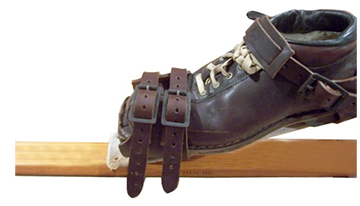
Early 1950s: C.A. Lund Military balata binding.
Click here for mounting instructions.
|

Kloa binding, launched by Odd Guttulsrud in 1954. It has two thin steel rods tthat are clamped into metal-lined holes in the boot sole.
|

ca 1963: Rottefella Gull binding
|

1970s: Bass Eie binding - Copy of patent
|
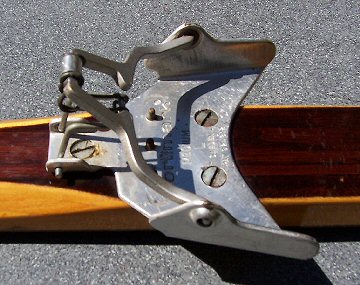
ca 1968: Normark 3-pin, made in Sweden
|
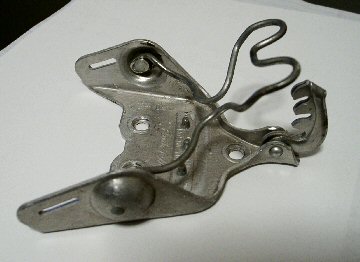
ca 1979: Rottefella wire bail binding
|
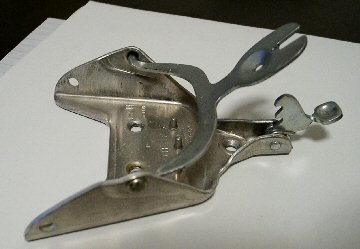
ca 1970: Modern Villom 3-pin, 75mm binding, designed by Bert Otto Hauglin. This design allowed the binding to be attached and released by using the spike on the end of the ski pole.
|
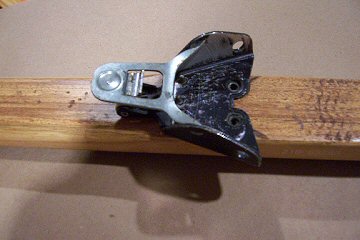
ca 1970: Skilom 50mm binding
|
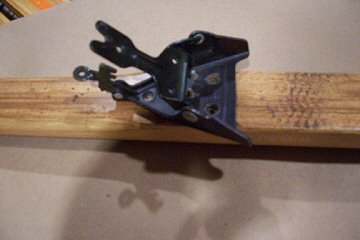
ca 1970: Dovre 50mm binding
|
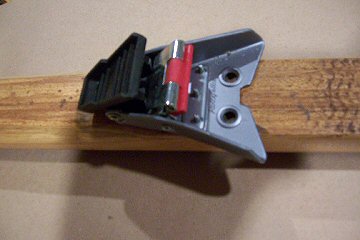
ca 1975: Rottefella 50mm binding
|
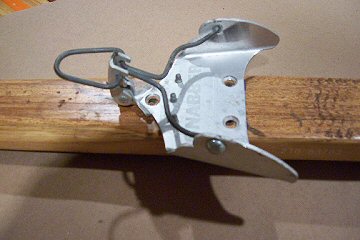
ca 1973: Snabber binding, made in Sweden
|
|
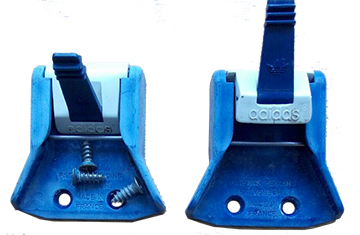
Adidas 38mm Norm introduced at the 1976 Winter Olympics in Innsbruck, Austria and used by the US Ski Team at the 1980 Winter Olympics. Source: crosscountryskihistory.us
|
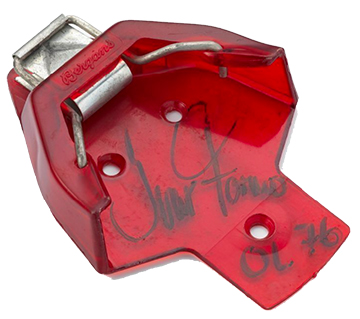
1973 Bergans binding manufactured by Sven Ivar Dysthe
Photo from https://www.nasjonalmuseet.no/
|
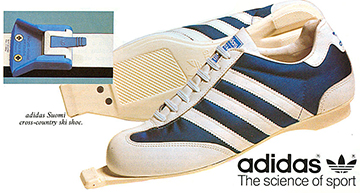
1979: Boots for Adidas 38mm Norm bindings
|

